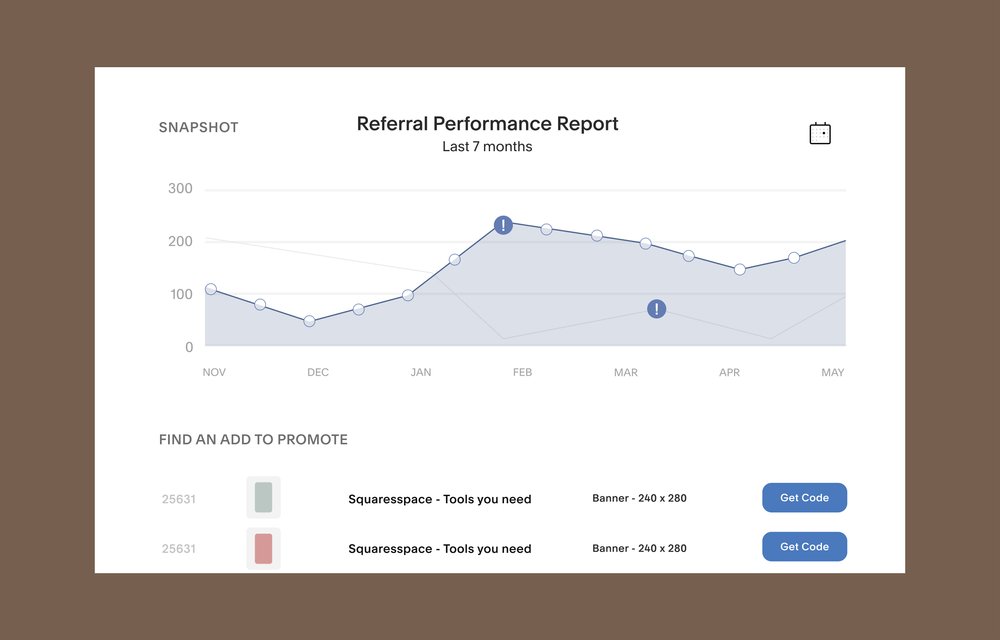Learn how to build an engaging and profitable blog with our free guide.
The email you entered is invalid.
Thank you for subscribing.
By entering your email, you indicate that you have read and understood our Privacy Policy and agree to receive marketing from Squarespace.
If you’re wondering how to make money blogging, you first need to make sure you understand your audience. Once your blog is up and running, you’ll begin to find your voice as you learn what keeps your audience engaged. Comments from readers, in addition to website analytics, are invaluable for determining which post types resonate with your audience. This greater understanding will help you refine your target audience for future posts and improve your writing. Then, as you gradually grow your following, you can begin to make money by blogging.
There are a number of tools that can assist you as you learn how to earn money from your blog. Learning and applying the basics of SEO can greatly improve your site’s visibility. Effective use of your social media accounts to promote your blog will also help you build an audience. And once your audience arrives on your blog site, ads and affiliate links are two direct methods for earning money from each visit. Read on to learn more about utilizing these techniques for monetizing your blog.
Defining your audience
As with most pursuits, practice and repetition will lead to better blog posts. You’ll gain confidence in your writing, and it will become easier to prove your expertise as you become an authority on your chosen topic. As you grow into your role as, for instance, a food blogger, the goal is to have your audience grow with you. By learning about your readers’ ages, genders, geographic locations, interests, and the types of your content that resonate with them, you can learn how to attract similar people to your blog.
Squarespace includes website analytics in all of its plans so you can learn about your readership. On the most basic level, you’ll be able to see which of your blog posts are getting the most views, how visitors to your site found their way to you, and how long they stayed on your site. You’ll also be able to see where your visitors live and the times and days they visited. This information is displayed in easy-to-understand charts and can help you formulate an effective publishing plan in terms of when your audience is online and which topics to cover more frequently based on their interests.
Using SEO and social media to promote your blog
Search engine optimization can play an outsized role in gaining a following, but your goal is to become a successful blogger—not necessarily an SEO expert. With Squarespace’s built-in SEO tools, you don’t need to be an expert to use SEO effectively.
Those SEO tools are:
Squarespace’s SEO panel. This panel provides a checklist that lets you tweak the title and description of your posts to improve their ranking in search results. You can also experiment with the title and description of your blog site as a whole and add your location and a browser icon to improve its visibility.
Google Search Console. Squarespace integrates with Google Search Console where you can index your site. Indexing lets Google know that your site exists and can be "crawled" for keywords. You can also see which keywords bring visitors to your site and how your site ranks among various Google searches.
Connect to social media accounts. Squarespace’s blogging tool also lets you connect your blog to your social media accounts, so it’s easier for you to promote your site and alert your followers about your latest content.
Advertising on your blog and using affiliate links
While SEO and social media promotion will help people find your blog, there are two straightforward tools for monetizing your blog once you’ve started to build an audience: ads and affiliate links.
Tools for monetizing your blog:
Google AdSense
The most popular pay-per-click ad program, Google AdSense, is free and easy to use. Within a Squarespace site, you can choose to have Google AdSense place the ads, or with code blocks (that don't require coding experience), you can select the positioning and place the ads yourself. Google AdSense is free to use and you’ll earn money when your readers click on an ad on your site.
Affiliate links
If you’re running a food blog, then it’s likely you’re frequently mentioning your favorite ingredients and kitchen tools. With an affiliate marketing program, you can add links to the products you mention and earn a commission on sales that result from a visitor from your site purchasing those products. You’ll need to do some research to find an affiliate program that includes the products you use. It’s also important to be ethical and add a disclaimer that informs readers that you are using affiliate links and will earn a commission on any sales that result from the products linked on your site. In addition to adding a disclaimer in the footer of your blog site, you might also consider using a “sponsored” tag for any posts that include affiliate links.

